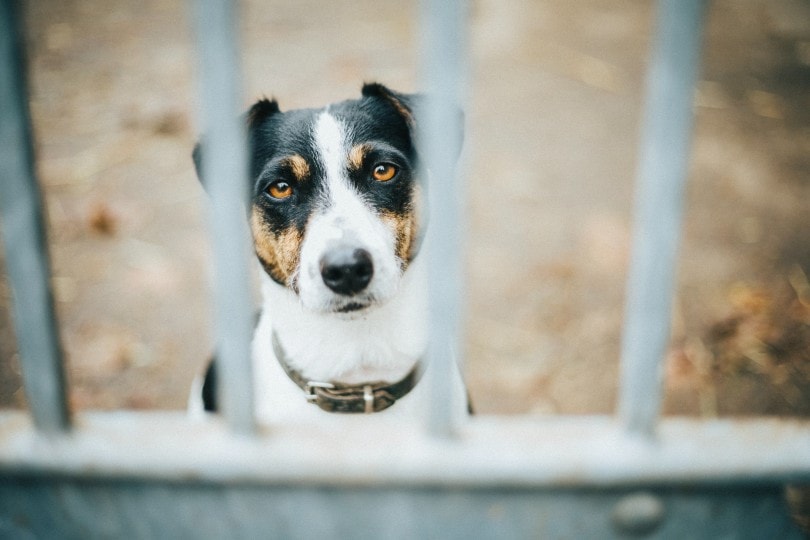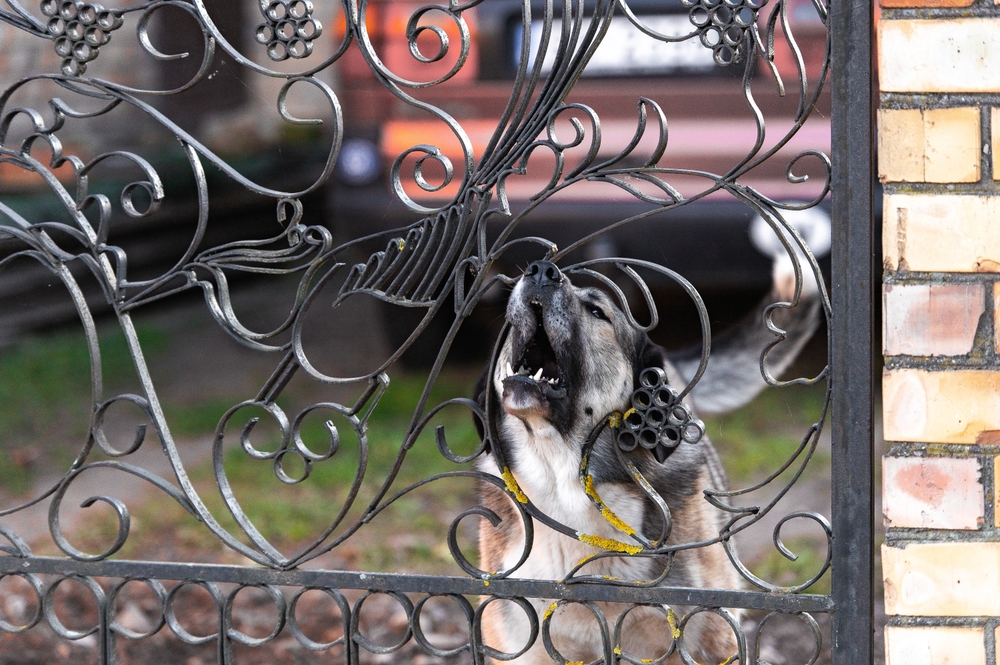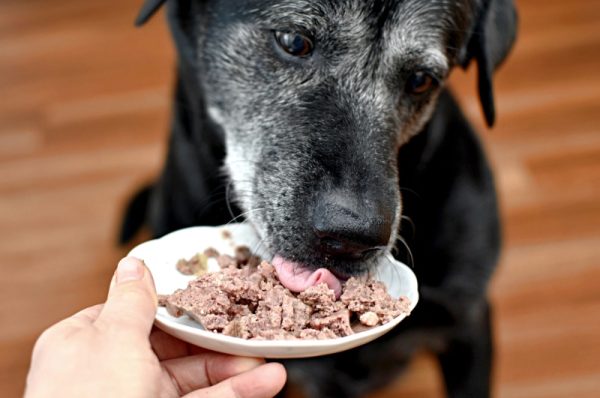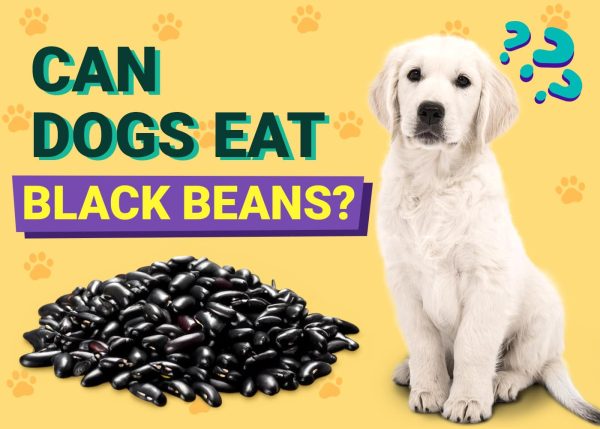Even the most sweet-natured dog can suffer bouts of aggression from time to time. While this is normal, it shouldn’t be ignored, as it could lead to injury for you, a family member, or even your dog themselves.
One of the most common causes of aggression in dogs is frustration. If your dog is suffering from frustration-elicited aggression, you should take immediate action to prevent the situation from escalating.
To find out what exactly frustration-elicited aggression is — and what to do about it — read on.

What Is Frustration-Elicited Aggression in Dogs?
If your dog wants something — such as a toy, treat, or attention — but they can’t have it, this will cause them to feel frustrated. If the situation isn’t remedied, the frustration will build and build, turning into a sort of emotional tinderbox, and all it takes is a single spark to cause serious aggression.
This aggression could be directed anywhere, including at you or other dogs. For example, a dog on a leash that wants to attack another dog will become frustrated when they’re not allowed to; if you reach down to pet them without letting them calm down first, they may snap at or bite you; an example of frustration-elicited redirected aggression.
At its root, frustration-elicited aggression is caused by a heightened state of arousal in your dog. This can be caused by all sorts of underlying factors, including fear, anxiety, or even sexual urges.
Frustration-elicited aggression outcomes can often result in redirected aggression. That’s when your dog attacks a neutral third party because there are obstacles preventing them from focusing their aggression on their true target.
This makes frustration-elicited aggression dangerous for you and your family. A dog that has never shown any sort of aggression toward you could still bite you severely if they become too frustrated; they’re not trying to attack you, per se, but they are trying to blow off steam caused by their frustrated impulses.

What Situations Can Cause Frustration-Elicited Aggression?
There are a few situations in which frustration-elicited aggression can crop up. One common one is when your dog wants to bark or lunge at something outside the house, but they can’t due to a window or fence being in the way.
As their frustration builds, they’ll become more likely to lash out violently if you or another person or animal get too close. That can lead to a fight between two dogs, or it can mean that you — or worse, one of your kids — suffers a nasty bite.
Frustration-elicited aggression often happens when a dog is on a leash or crated as well. Basically, anything that puts a barrier between your dog and the target of their arousal can create frustration and aggression.
Which Dogs Are Most Vulnerable to Frustration-Elicited Aggression?
Frustrated-elicited aggression can strike any dog, regardless of age, sex, or breed. It’s an individual thing, and there aren’t necessarily any clear markers that you can look out for before bringing a dog home (although the dog lunging at you from behind the cage at the shelter may be a bad sign).
What’s worse is that it can afflict even the sweetest, most trustworthy dogs. It’s not something that’s reserved for animals with nasty temperaments. This makes people more likely to get bit, as they think that their trusted pet would never bite them — and then they learn otherwise.
If your pup is in an uncomfortable situation, or their desires are out of reach, they may respond by lashing out — at anyone in biting range.
Of course, any dog that’s just aggressive in general will also be prone to frustration-elicited aggression.
One thing that these dogs all have in common is a high level of reactiveness. They’re impulsive and tend to be over-excited, and that energy can come out in negative ways. It’s important to recognize that even a dog that’s reactive in a happy way can turn aggressive if they get frustrated. For example, a dog running around joyously because their human is home may lash out if they can’t get to them.

How to Solve Frustration-Elicited Aggression in Dogs
Dogs, like humans, often fall into behavioral patterns. If you do X, they’ll respond with Y. In this case, when faced with frustration, your dog might respond with aggression.
In order to solve the problem, you’ll need to give them something other than violence to use in response to the frustration. There are a few ways that you can go about this.
1. Remove the Source of Their Frustration
In the short term, the best thing to do is get them away from the thing that’s causing them frustration. This could mean obstructing their view of the outside world, or it could mean avoiding other dogs on walks.
This will work for a little while, but it doesn’t actually solve the problem. Sooner or later, something will slip through the cracks, and you’ll have another blowup to deal with.
Still, if you need immediate help with the problem, removing the reason for frustration from your dog’s life is the way to go.

2. Teach Them a Better Way
Ultimately, you’re going to need to teach your dog what you want them to do instead of lashing out violently. What that is can be up to you, but you’ll need to work with them consistently to ensure that they understand what you want.
For example, if your dog lunges at people or animals while on a walk, you can work to redirect their attention to you instead. This can be achieved by teaching your dog pattern games or auto check-ins where they learn to redirect their attention to you before reacting. These techniques teach them impulse control before they get frustrated. You will need to take treats with you on your walks and when you notice something that would set your dog off, grab their attention and reward them for paying attention to you instead of the trigger. Of course, timing here is crucial and you need to be ahead of your dog so recognizing what causes their frustration and acting before they get to that mental mindset is key. For this technique to be successful, your dog needs to be very familiar with the command and reward before you start testing it out in the field.
In a different scenario, a dog might get frustrated if they see you eating dinner and they don’t get anything. This dog might snap out of frustration, however, you can get ahead of that by teaching your dog to sit or lay down on a mat where your legs and hands are out of reach, and reinforcing them very well for staying there while you have your dinner. Of course, this can only be achieved over several sessions gradually extending the time but over time, you can teach your dog that good things happen when they control their impulses or look at you instead of focusing on outside distractions, and they’ll be less likely to get worked up by everything that crosses their path or every time they feel left out.
While this is the most effective long-term solution, it’s not foolproof. So, it’s best to minimize their exposure to usual triggers as much as you can. That is to say, your dog’s aggression is unlikely to be “cured,” but you can manage it with time and effort.
A dog that learns to “take a deep breath” instead of lunging out of frustration, is a mentally stable and secure dog. But to get there, they need your support, which means you also need to learn how to handle them, so don’t be afraid to enlist the services of a pro to help you with this. It’s vastly preferable to outsource the job than to deal with a lawsuit or something like that.
If you need to speak with a vet but can't get to one, head over to PangoVet. It's our online service where you can talk to a vet online and get the advice you need for your pet — all at an affordable price!

3. Consider Medication
If the training method doesn’t work or if it’s of limited usefulness, you may need to talk to your vet about putting your dog on an anti-anxiety medication.
Pet behaviors can be caused by all kinds of things, but sometimes the source is medical. You can manage veterinary costs with the help of a pet insurance company like Lemonade, which offers adjustable plans and balanced coverage.
Just like in humans, anti-anxiety medications help regulate your dog’s brain chemistry, making them less likely to suffer uncontrollable fits of rage. It’s not a perfect solution, but it can make a huge difference in some dogs.
If you go down this route, never take your dog off the medication cold turkey, as that can really throw their brain chemicals out of whack, possibly leading to more — and potentially worse — aggression. Instead, ask your vet the best way to slowly wean them off of the medication.

Take Frustration-Elicited Aggression in Dogs Seriously
Frustration-elicited aggression can be a huge issue in dogs, as it’s one of the most common reasons that pets attack their own families. If you notice your dog showing any signs of frustration, you should take immediate action before it ends up manifesting as aggression.
With time and effort, you can minimize the risk that your dog will suffer a bout of frustration-elicited aggression at a bad time. You’ll never fully eliminate that risk, however, so you’ll have to stay vigilant.
Your dog — and your family — are worth it, though.
Looking for other aggression types in dogs? Try:
Featured Image Credit: Zelma Brezinska, Shutterstock



















